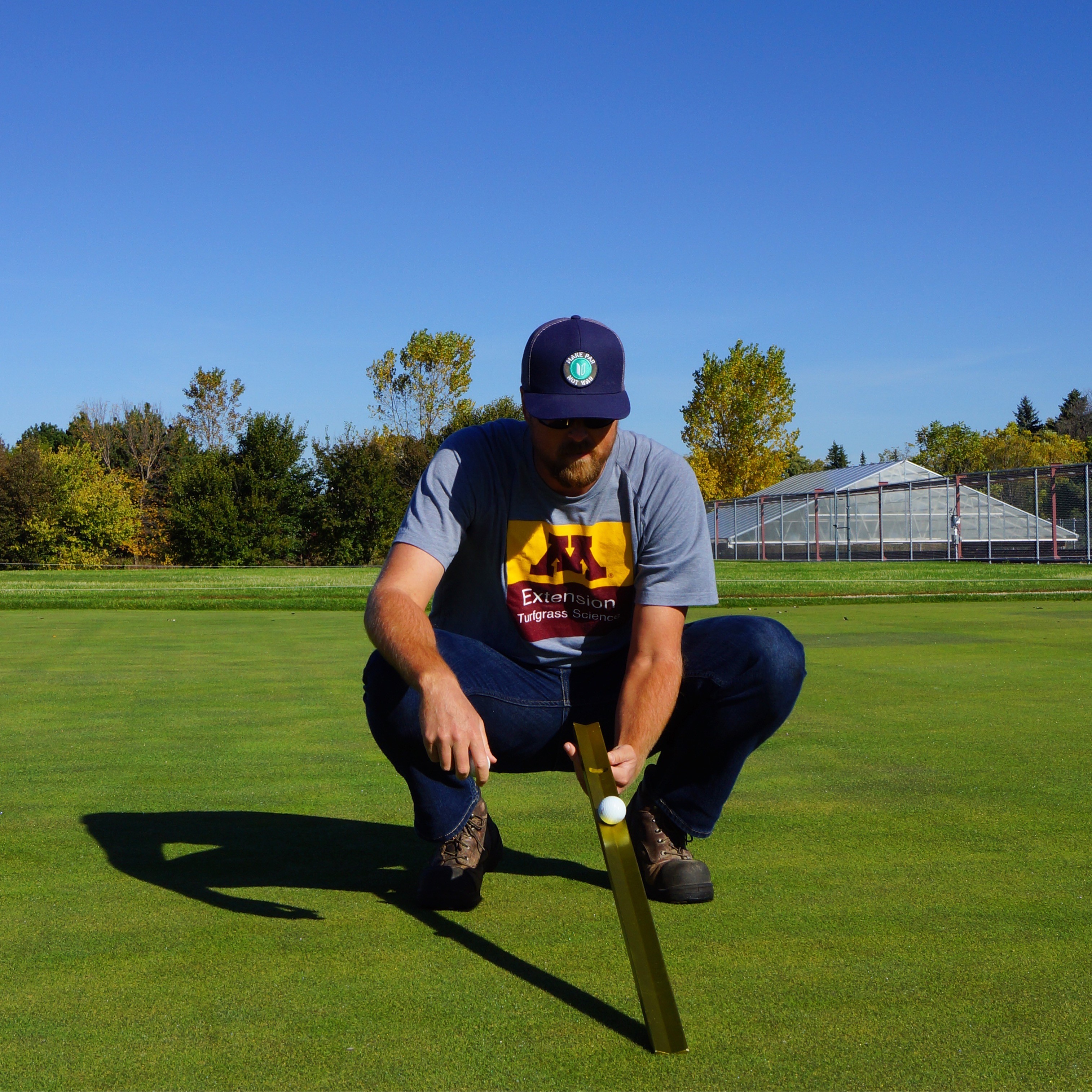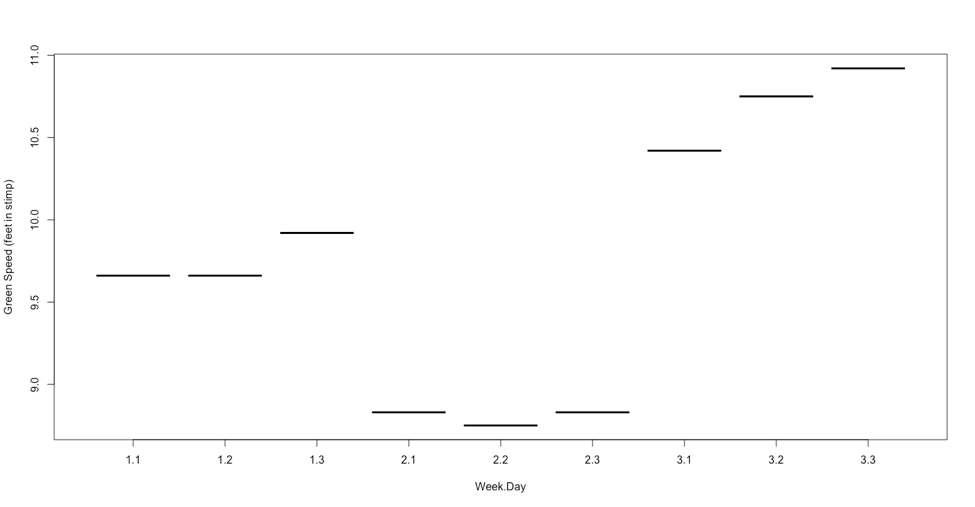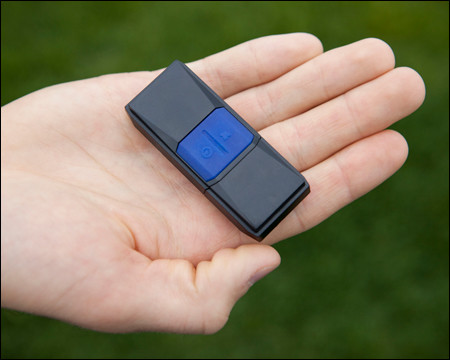By Parker Anderson
Tuesday, November 14, 2017
In May of 2017, to address the challenges the golf industry faces, the United States Golf Association laid out their “Road Map to 2025” which sets the goals of improving golfer satisfaction by 20% while reducing critical resource consumption by 25% by 2025 (USGA, 2017b). Golf industry trends indicate that more golf courses are closing than are being opened, management costs are increasing, participation rates are flat or declining, and consumer behavior is changing (Licata and Tiger, 2010; NGF, 2017). It is critically important for golf course managers to identify factors that prevent golfers from participating in the game (Petrick, 2001). To achieve solutions to these challenges, understanding the systems and flows of a golf course, how resources are used, how golfers navigate and play the course, and how the golf course interacts with the environment, is vital.
The Science of the Green Initiative’s Green Speed and Pace of Play study is exploring how golf course conditions such as green speed impact pace of play, round times, and player experience. Pace of play and golf course conditions are key variables in the success of the golf industry (USGA, 2017a). Slow pace of play and long round times are often cited as deterrents for potential participants and create inefficiencies in the throughput of a golf course, therefore not maximizing the facility’s revenue potential (Tiger and Salzer, 2004; USGA, 2017a).
Golf facility managers are pressured to increase green speeds, but these faster greens can result in decreased turfgrass health, higher maintenance costs, decreased player enjoyment, and potentially longer round times (Danneberger, 1993; Doak and Crosby, 2017; McCarty, 2001; Sachs and Luff, 2002). Anecdotally, it is a common belief that faster green speeds result in slower pace of play, potentially because of the increased putting difficulty of fast greens or the longer amount of time a ball rolls on a faster green. If this is true, pressure placed on the superintendent to provide faster green speeds does not align with the success of a golf facility and the enjoyment of the golfer. If slow play is a factor in influencing participation, substantial effort needs to be placed in maximizing the throughput of a facility and decreasing the waiting times of golfers (Tiger and Salzer, 2004).
We hypothesized that there is a positive correlation between green speed and pace of play; as greens are managed to play faster, the time it takes to play a round of golf also increases. Therefore, our objectives were to: 1) test the pace of play (time required per player per green) against the green speed (measured by Stimpmeter in feet; see Figure 1) and 2) examine how significant green speed is in impacting pace of play. The green speeds were measured using Stimpmeter readings (Figure 2) and the pace of play was measured using GPS data (Figure 3) of time spent on each putting green for each player throughout a round of golf. Seven golf course study sites around the United States were selected to represent a cross-section of the industry with a variety of golf course characteristics (i.e. public, private, regional differentiation, etc.).
Green speed was shown to be statistically significant in impacting pace of play. An increase of one foot in Stimpmeter reading resulted in an increase of 6.39 seconds per green per player. This one foot increase equates to an increase in total round time of a foursome of 7.67 minutes. In some instances, the increase in time spent per player per green resulted in an increase of as much as 30 minutes per round for a one foot increase in green speed (25 seconds per player per green). Overall, playing experience ratings decreased as green speeds increased. This decrease, although statistically significant, was small.
In conclusion, we found that faster greens equate to longer round times. The strength of this relationship, however, is not as substantial as we had hypothesized. More research needs to be conducted in order to understand the relationship between pace of play and the many variables that impact round times. We are preparing a research paper to publish these and other results.
Acknowledgements
The Science of the Green Initiative would like to thank the organizations and facilities that participated in the 2016-2017 USGA/UMN Green Speed – Pace of Play Study as well as our research partner, the United States Golf Association.
References
Danneberger, Dr. T. Karl. Turfgrass Ecology & Management; Climate, Ecosystems, Predators, Soils. OH. Franzak & Foster, 1993. Print.
Doak, T., and B. Crosby. Tom Doak’s Little Red Book of Golf Course Architecture. Traverse City, MI: Renaissance Golf Publishing. 2017. Print.
Licata, Jane W., and Andrew W. Tiger. "Revenue Management in the Golf Industry: Focus on Throughput and Consumer Benefits." Journal of Hospitality Marketing & Management 19.5 (2010): 480-502.
McCarty, L.B. Best Golf Course Management Practices. NJ: Prentice-Hall, 2001. Print.
National Golf Foundation. “Golf Participation in the U.S.: 2017 Edition”, published: 2017, website, accessed: February 2017, <http://www.ngf.org/>.
Petrick, J. “Analysis of Golfer Motivations and Constraints by Experience Use History”. Journal of Leisure Research. 2001, vol. 33, No. 1, pp. 56-70.
Sachs, Paul D. and Richard T. Luff. Ecological Golf Course Management. Hoboken, NJ: John Wiley & Sons, 2002. Print.
Tiger, Andrew A., and Dave Salzer. "Daily play at a golf course: Using spreadsheet simulation to identify system constraints." INFORMS Transactions on Education 4.2 (2004): 28-35.
USGA, “Facility Survey Results”, United States Golf Association, accessed: May 2017(a). Digital file.
USGA, “North American Golf Innovation Symposium”, United States Golf Association, published: March 2017, website, accessed: June 2017(b). Website <http://www.usga.org/serving-the-game/nagis-2017.html>.


